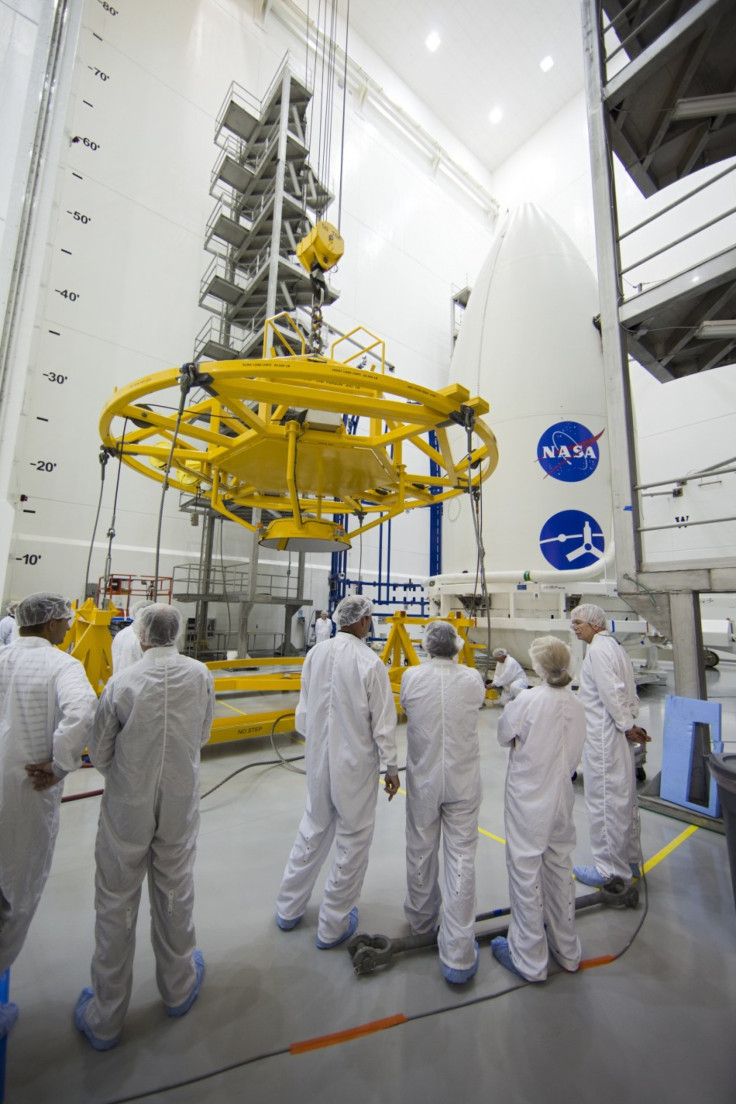NASA: Juno Spacecraft to Unlock Secrets of Solar System [PHOTOS]

NASA's Juno Spacecraft mission is to bring further understanding of our solar system's beginnings by shedding light on the origin and evolution of Jupiter.
The spacecraft was secured to its rocket on Wednesday morning, ready to embark on its journey to Jupiter. The mission will launch on Aug. 5, 2011, from Cape Canaveral Air Force Station, Florida. For the Aug. 5 liftoff, the launch window opens at 11:34 a.m. EDT and will remain open until 12:43 EDT. Juno will reach Jupiter in July, 2016, where it will orbit Jupiter's poles a total of 33 times in order to learn more about its interior, atmosphere and aurora.
NASA held a news briefing on Wednesday at the agency's Kennedy space Center in Florida where they discussed the preparations for Juno's mission to Jupiter.
"We're about to start our journey to Jupiter to unlock the secrets of the early solar system," said Scott Bolton, the mission's principal investigator from the Southwest Research Institute in San Antonio, via NASA.gov. "After eight years of development, the spacecraft is ready for its important mission."
Juno was secured to the most powerful Atlas rocket ever made -- the United Launch Alliance Atlas V 551. The 551 is part of the Atlas V family of "Evolved Expendable Launch Vehicles (EELV)," which have followed a carefully executed program, resulting with 100 percent mission success.
Now that Juno has been attached atop the Atlas V 551, it will go through a series of checks and tests, which will confirm its readiness for the launch.
Jupiter contains more mass than all of the other planets combined and is 300 times more than the mass of Earth. According to NASA, Jupiter's most obvious features are the alternating white and colored cloud bands, zones and belts. Currently, scientists don't know what gives the clouds the colors they have, but theories on Jupiter's stripes exist.
According to NASA, Juno Will:
- Determine how much water is in Jupiter's atmosphere, which helps determine which planet formation theory is correct (or if new theories are needed)
- Look deep into Jupiter's atmosphere to measure composition, temperature, cloud motions and other properties
- Map Jupiter's magnetic and gravity fields, revealing the planet's deep structure
- Explore and study Jupiter's magnetosphere near the planet's poles, especially the auroras - Jupiter's northern and southern lights - providing new insights about how the planet's enormous magnetic force field affects its atmosphere.
Key things to know about Juno:
- Spacecraft scheduled to launch between Aug. 5 and Aug. 26, 2011
- Five-year cruise to Jupiter, arriving July 2016
- Spacecraft will orbit Jupiter for about one year (33 orbits)
- Mission ends with de-orbit into Jupiter
ALSO READ: International Space Station to be Sunk to Ocean Bottom in 2020
© Copyright IBTimes 2024. All rights reserved.





















